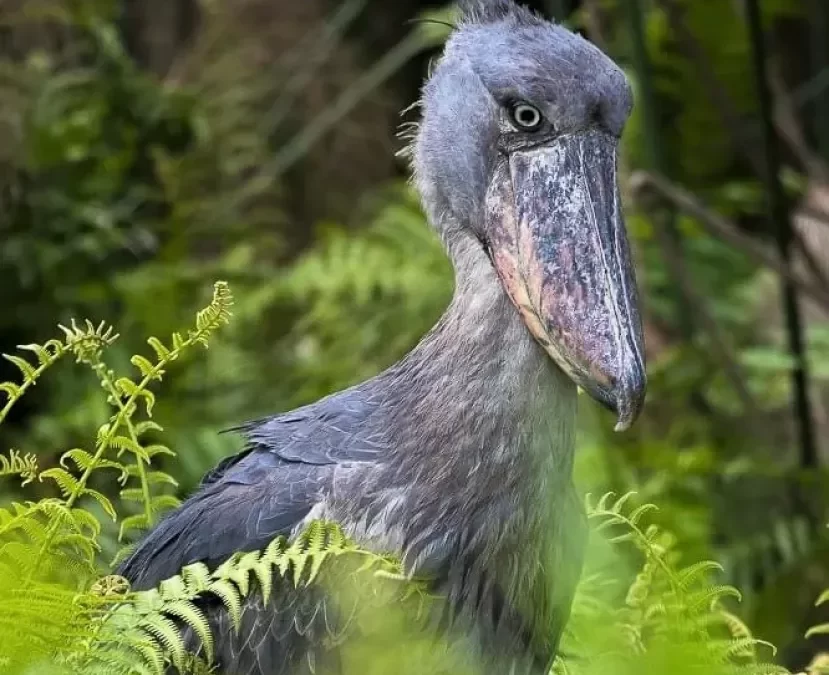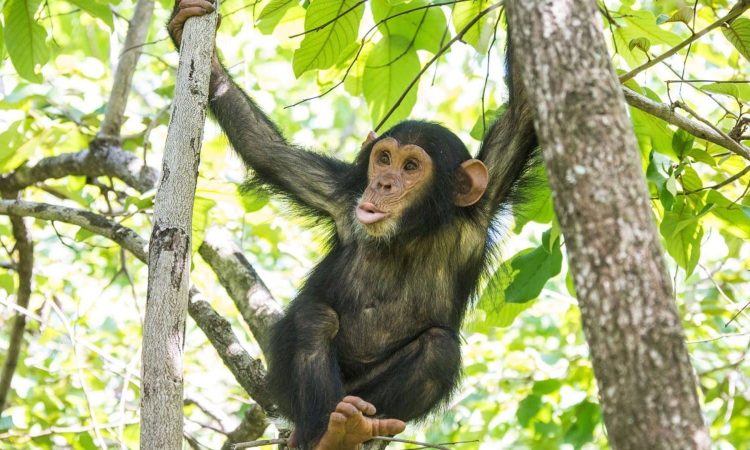Chimpanzee Trekking in Nyungwe National Park, Rwanda
October 14, 20258 Must Try Ugandan Local Dishes
October 17, 2025The Shoebill Stork of Mabamba Wetland: Uganda’s Iconic Birding Experience
Shoebill Stork in Mabamba Wetland, Nestled along the northern shores of Lake Victoria, just a short drive from Entebbe, lies one of Uganda’s most treasured birding sanctuaries — the Mabamba Wetland. This lush swamp is world-famous for one incredible reason: it’s one of the best places on Earth to see the elusive Shoebill Stork in its natural habitat.
For birdwatchers and nature enthusiasts alike, spotting a shoebill in Mabamba is a once-in-a-lifetime experience — an encounter that captures the magic, mystery, and wild beauty of Uganda’s wetlands.
What Makes the Shoebill So Special?
The Shoebill Stork (Balaeniceps rex) is unlike any other bird in Africa. With its massive shoe-shaped bill, prehistoric appearance, and calm, statuesque behavior, it often feels like a creature from another era. Standing up to 1.5 meters (5 feet) tall, the shoebill is both majestic and slightly intimidating — a true “living fossil” that dates back millions of years.
Despite its name, the shoebill isn’t a true stork. It’s actually more closely related to pelicans and herons, sharing traits with both families. Its enormous beak, which can reach up to 24 cm long, helps it catch large prey such as lungfish, catfish, frogs, and even baby crocodiles.
What makes the shoebill especially fascinating is its patient hunting technique — standing still for long minutes (sometimes hours) before striking with lightning speed when prey appears. Watching this behavior in the wild is an unforgettable spectacle.
About Mabamba Wetland
Located approximately 50 kilometers (about 1.5 hours) west of Entebbe, Mabamba Bay Wetland is part of Lake Victoria’s northern marsh system. It’s a vast expanse of papyrus channels, lagoons, and floating vegetation — the perfect environment for fish, frogs, and the rare shoebill.
Recognized as a Ramsar Wetland of International Importance, Mabamba supports over 300 bird species, including both resident and migratory species. It’s one of Uganda’s most significant birding sites and a must-visit destination for anyone interested in avian ecology, photography, or eco-tourism.
Shoebill Tracking Experience in Mabamba
A visit to Mabamba Wetland is typically done by canoe (local wooden boat), steered by experienced local guides and bird spotters. Early morning (between 7:00 am and 10:00 am) is the best time to go, as shoebills are most active during these hours, often seen feeding or basking in the morning light.
As your canoe glides quietly through narrow papyrus channels, the only sounds are the rustling reeds, the calls of African Jacanas, and the splash of paddles. Then, suddenly, your guide whispers and points ahead — and there it is, a giant grey figure standing motionless in the swamp, eyes fixed on the water below.
With luck and patience, you might see the shoebill strike for prey or take flight, revealing its impressive 2.5-meter wingspan. The experience feels intimate, tranquil, and awe-inspiring — one of Africa’s most remarkable wildlife encounters.
Other Birds to See in Mabamba | Shoebill Stork in Mabamba Wetland
While the shoebill is undoubtedly the star attraction, Mabamba is also a paradise for birdwatchers seeking to expand their species list. You can expect to spot:
-
Papyrus Gonolek – a striking red-and-black bird found only in papyrus swamps.
-
Malachite Kingfisher – dazzling blue and orange, often perched on reeds.
-
African Jacana – known for its long toes that let it walk on floating vegetation.
-
Goliath Heron, Purple Swamphen, and African Pygmy Goose.
-
Seasonal migratory species from Europe and Asia between November and April.
The diversity of habitats — from open water to dense papyrus — makes Mabamba one of Uganda’s top birding hotspots, even for seasoned birders.
How to Get There | Shoebill Stork in Mabamba Wetland
Mabamba is easily accessible from Entebbe or Kampala:
-
By Road: From Entebbe, drive through Kisubi and Nakawuka to Mabamba village (about 1.5 hours).
-
By Boat: A more scenic route is by speedboat from Entebbe across Lake Victoria, which takes around 45 minutes and offers a beautiful view of the lake.
Once at the landing site, local community guides will take you into the swamp on traditional canoes — the most eco-friendly and authentic way to explore.
Entry Fees and Guided Tours | Shoebill Stork in Mabamba Wetland
-
Shoebill canoe trip: Around $25–40 per person, depending on the guide and boat.
-
Community fee: A small conservation contribution goes to support the Mabamba Wetland Eco-tourism Association, helping local people protect the area.
You can also book a guided birding day tour from Entebbe, which includes transportation, permits, and a professional bird guide.
Conservation and Community Involvement
The Mabamba Wetland Eco-Tourism Association plays a key role in protecting both the shoebill and its fragile ecosystem. Through community-based tourism, local fishermen and residents are trained as bird guides, creating an incentive to protect the wetland instead of draining it for agriculture.
Tourism revenue supports:
-
Shoebill conservation patrols
-
Community education programs
-
Sustainable livelihoods for local families
Thanks to these efforts, Mabamba has become a model for community-led conservation in Uganda — showing how tourism can directly benefit both people and wildlife.
Where to Stay
You can easily visit Mabamba as a half-day or full-day trip from Entebbe, but if you’d like to stay nearby, consider:
-
Nkima Forest Lodge – An eco-lodge overlooking Mabamba, with guided birding tours.
-
2 Friends Beach Hotel (Entebbe) – Comfortable stay on Lake Victoria’s shores.
-
Lake Heights Hotel – Ideal for travelers connecting through Entebbe International Airport.
Best Time to Visit
The dry seasons (December–February and June–September) are best for shoebill tracking, as water levels are lower and visibility is better.
However, Mabamba is a year-round destination, and even during the rains, bird activity remains high.
Final Thoughts
A visit to Mabamba Wetland is more than just a birdwatching trip — it’s a journey into one of Uganda’s most peaceful and vital ecosystems. Whether you’re a serious birder or simply love nature, the moment you lock eyes with a shoebill standing in the still waters of the swamp, you’ll understand why it’s one of Africa’s most sought-after birds.




